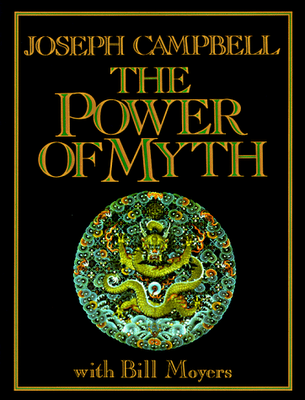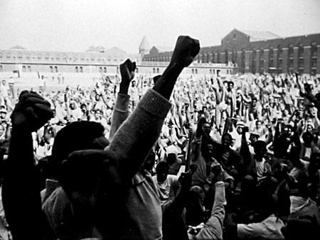Alex Constantine - June 10, 2008
By Bob Feldman
(Most of the following article originally appeared in the October 9, 1996 issue of Downtown/Aquarian Weekly)
“The Village Voice became not something there because of the need for it, to give a voice to voiceless people, but a prize of booty on the battlefield of venture capitalism, something to be looked at and fought over, put into the portfolio of a corporation, used by one individual on the make after another…As of 1977, it had become part of a super-empire…”
--Kevin McAuliffe in The Great American Newspaper: The Rise and Fall of the `Village Voice’ in 1978
Denver’s “alternative” weekly newspaper, the Denver Westword, may not be publicizing on a regular basis the current efforts of local antiwar activists to protest against the Democratic Party-controlled Congress’s failure to end the U.S. military occupation of Iraq and Afghanistan and impeach Bush and Cheney, by mobilizing antiwar Denver residents to demonstrate outside the 2008 Democratic National Convention.
One reason might be because the Denver Westword is owned by the Phoenix-based Village Voice/New Times “alternative” weekly newspaper chain that also owns the Village Voice, the LA Weekly, the Seattle Weekly, the San Francisco Weekly, the Minneapolis City Pages, the Phoenix New Times, the Dallas Observer, the Orange County Weekly, the Houston Press, the Cleveland Scene, the Nashville Scene, the St. Louis Riverfront Times, the Broward-Palm Beach New Times, the Miami New Times and the Kansas City Patch. In fact, the free circulation of the “alternative” weekly newspapers which the Denver Westword 's out-of-state parent company owns represents 25 percent of the free weekly circulation of all U.S. “alternative” weekly newspapers.
But prior to the 2005 merger between the Wall Street bankers who had purchased the Village Voice from former Voice owner Leonard Stern for $170 million in 2000 and New Times media company owner Michael Lacey, the Voice was also not controlled by its original owners. For--like current Voice/Westword owner Michael Lacey--the Wall Street bankers, former Voice owner Leonard Stern and former Voice owner Rupert Murdoch did not provide the initial money or initial labor that was needed to launch the Village Voice on October 26, 1955. The Voice was actually started by Dan Wolf, Ed Fancher and Norman Mailer—using money from Mailer’s bank account and from Fancher’s inheritance.
(Downtown/Aquarian Weekly 10/9/96)
PART 2
(Most of the following article originally appeared in the October 9, 1996 issue of Downtown/Aquarian Weekly.)
Voice co-founder Wolf was the husband of a social worker. After his involvement in the world of Manhattan alternative journalism enabled him to become a millionaire by the early 1970s, Wolf turned neoconservative and eventually moved into a City Hall office in 1977 to be an aide and close adviser to then-New York City Mayor Ed Koch.
Voice co-founder Fancher was a Lake Placid, New York prep school graduate who had become a Manhattan doctor. He had also inherited $30,000 (in 1950s money) worth of Orange County Telephone Company stock from his grandfather.
Fancher used part of his inherited utility company stock to come up with the $5,000 that he initially contributed to launch the Voice. [Now-deceased] Best-selling Novelist Mailer also put up $5,000. In exchange for his $5,000 investment, Mailer and his lawyer received 40 percent of the Voice’s stock. In exchange for his $5,000 investment, Fancher and his close friend, Dan Wolf, received 60 percent of the Voice’s stock.
The idea of naming their Manhattan alternative newspaper, “The Village Voice,” however, was apparently not thought up by either Mailer, Wolf or Fancher, but by a woman named Patricia Woods, who worked as an English teacher during the 1950s. Wolf took the title of Voice editor-in-chief, but a hip guy named John Wilcock was named the Voice’s first news editor. Other editorial employees initially included Florence Ellerbert and Jerry Tallmer, who was a former editor of Dartmouth College’s student newspaper. Although Wolf was approaching his 40th birthday when the Voice was first published, “in the first issue he would lie and say he was only 33,” according to The Great American Newspaper: The Rise and Fall of the `Village Voice’ by Kevin McAuliffe.
Before the 1962 newspaper strike by local union people shut down all of Manhattan’s daily major newspapers for 114 days, the Voice was not much of a success, financially. In 1955, it only had a circulation of about 3,000, sold for 5 cents and lost up to $1,000 a week in 1950s money. It didn’t publish many classified ads, though, in those days and, therefore, consisted of only 12 pages.
To keep the Voice from going bankrupt in 1956, Mailer had to pour in about $10,000 more from his literary profits and Fancher had to shovel in another $10,000 from his utility company stock inheritance. But the Voice still had difficulty making money until the 1962 newspaper strike. Between October 1955 and the start of this strike, about $60,000 was lost by the then-alternative newspaper and then-Voice editor-in-chief Wolf had to be “supported by the income brought in by his wife, Rhoda, a social worker,” according to The Great American Newspaper: The Rise and Fall of the `Village Voice’. The Voice’s circulation, though, had risen to about 17,000 on the eve of the big Manhattan daily newspaper strike.
http://www.bfeldman68.blogspot.com/
TO BE CONTINUED



